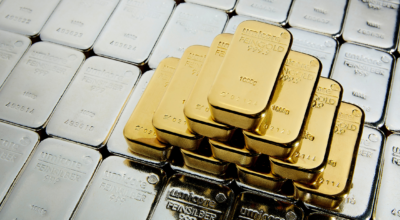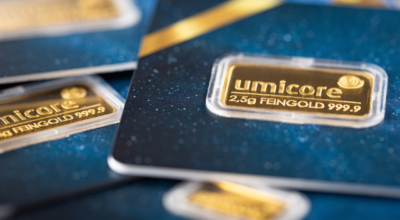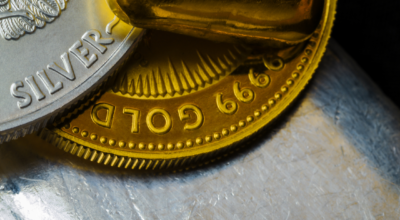Consider These Facts Before Investing in Gold
- The Perth Mint: Eight Important Facts Before You Invest
- Kitco: Don’t Sell Your Gold
- Goldhub: Should Gold Perform Better Than It Does?
The Perth Mint: Eight Important Facts Before You Invest
Most investors agree that adding gold to your portfolio is a safe and responsible choice to diversify your investments. However, as with all matters it’s important to do your research and learn the crucial facts before making the purchase.
The Perth Mint has put together a helpful list of eight questions and eight answers a soon-to-be gold investor should know before adding the yellow metal to their portfolio:
The first question you must answer is what role will gold play in your portfolio. Generally, diversification can smooth out returns during the market’s ups and downs, and gold tends to hold or even rise in value during stock crashes. Thus, many investors consider it a sort of an ‘insurance’.
Secondly, you should study the gold price and how it’s formed. The ‘spot price’ is the current price at which 1oz of gold can be bought or sold. It changes all the time depending on the global metal exchanges. A retail investor can also expect to pay a premium, which covers the operating, fabricating, storing, and other costs.
Questions three, four and five are about the different forms gold can be purchased: Owning physical bullion is very important for some investors, as it removes the ‘counterparty risk’ associated with other forms of ownership. However, you can also invest in mining company shares, acquire ETF’s or exchange traded funds, or open a gold account if you prefer not to store your gold personally. Additionally, gold can be ‘allocated’, meaning it’s in 400oz or 1kg bars or in other investment grade form, or ‘unallocated’, meaning it can be partially refined, scrap gold or other miscellaneous forms.
The last three questions answer how easy gold is to sell, buy, and how much should an investor own it. Gold market’s daily turnover averages in 150 billion USD meaning that there will always be someone willing to buy. Remember to consider the various exit fees, such as the premium, as you calculate your selling price. When you plan to buy make sure you are buying from a trusted source.
The right amount of gold in your portfolio depends on your personal financial circumstances and objectives. However, according to the World Gold Council, statistically allocating between 6% to 10% of your assets to gold makes a tangible improvement and returns on a sustainable basis.
Read the whole article / 19.9.2022, Staff Writer
Kitco: Don’t Sell Your Gold
George Milling-Stanley, the Chief Gold Strategist at State Street Global Advisors, warns that now is not the time to liquidate your core gold assets.
According to him the gold price could continue its struggle due to the resilience of the U.S. economy in the face of the Federal Reserve’s aggressive monetary policy: there have been solid gains on the U.S. dollar, healthy consumer demand and relatively strong equity markets, which are keeping the lid on gold prices.
“Until we see these conditions change, gold’s prospects are going to remain somewhat limited,” he comments and adds that the equity market selloff has been mild compared to its rally over the last 13 years. Still, inflation remains worryingly high and the economy will continue to slow down as the Fed will try to bring it down by raising interest rates. The threat of a possible recession has allowed gold prices to remain around $1,675.
Milling-Stanley would not sell his safe-haven assets in this economic reality and would even look to add to his core position as he doesn’t expect the gold price to fall much lower. The rates will continue to increase until inflation comes down, and the hard times will begin when the market finally realizes this.
Read the whole article / 22.9.2022, Neils Christensen
Goldhub: Should Gold Perform Better Than It Does?
High inflation should have led to a much stronger performance for gold, and while it has outperformed most major assets so far, factors such as the rising rates and a strong dollar have had a negative effect on the gold price.
Generally gold price is affected by four drivers: economic expansion, risk and uncertainty, opportunity cost, and momentum. In 2022 the geopolitical tension and high inflation have resulted in a greater risk and uncertainty. However, many bond investors believe that the Fed will be able to effectively control inflation, which in practice lessens the effect of high inflation on gold price.
Gold has also suffered from higher opportunity costs from high interest rates and historically strong US dollar. If only the real rates and dollar are accounted for, gold should’ve fallen by over 30%, and its relatively good performance is a sign of its global appeal and a wider set of variables.
Currently both interest rates and the dollar pose risks for gold. Central banks have put down aggressive measures to combat inflation, which has led to a market more sensitive to monetary policy. Goldhub remains cautiously optimistic, as the rate hikes are likely to slow down, while the collective actions of the central banks should eventually weaken the dollar.
While gold futures have again turned net short, it hasn’t historically lasted long and should revert in the coming weeks. Meanwhile the central bank gold demand remains strong and the rising recessionary and geopolitical risk should shift investor strategies towards safeguarding their portfolios with gold.
Read the whole article / 22.9.2022, Juan Carlos Artigas
Image: Agosi






